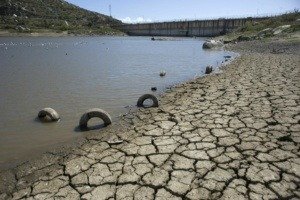
The decrease in flow in perennial and rain-fed rivers will have consequences for the environment, which will subsequently threaten the country’s economy and society
It has been predicted that in the future, countries will go to war over water. Considering the present, these predictions can’t be incorrect – Egypt was on tenterhooks when Ethiopia constructed a dam upstream of the Nile. Turkey, Syria and Iraq squabble over Euphrates-Tigris. In Southeast Asia, the Mekong has become a bone of contention for six countries. Despite the river treaties India has with China and Pakistan, there is always unease when anything is done upstream of the rivers. At home, there is plenty of rancour between Goa and Karnataka, Karnataka and Tamil Nadu and Punjab and Haryana over river water sharing.
go to war over water. Considering the present, these predictions can’t be incorrect – Egypt was on tenterhooks when Ethiopia constructed a dam upstream of the Nile. Turkey, Syria and Iraq squabble over Euphrates-Tigris. In Southeast Asia, the Mekong has become a bone of contention for six countries. Despite the river treaties India has with China and Pakistan, there is always unease when anything is done upstream of the rivers. At home, there is plenty of rancour between Goa and Karnataka, Karnataka and Tamil Nadu and Punjab and Haryana over river water sharing.
Rivers in India and the threats to them
Rivers are not just long stretches of water bodies that usually head towards the sea. Along with their course they replenish groundwater, create ecosystems which foster a variety of life. They also are key to inland navigation, agriculture, industry, urban growth and nutrition. In school, we have learned that there are two kinds of rivers – perennial and rain-fed. Now there is a possibility that many perennial rivers may morph into rain-fed rivers. The following example explains why the glaciers which feed the Ganga are receding at the rate of twenty-two meters a year, twice the rate from a decade ago.
Rainfed rivers are under threat too. Early in the 2018 monsoon period, there were reports suggesting that this year’s monsoon may herald an upswing after the steady decline in the last few monsoons. However, a recent update on www.skymetweather.com belies this hope. The site writes: “The tale of deficit Monsoon has continued in the year 2018 as well. Moreover, for the last five years, rains have remained on the lower side wherein 2014 and 2015 were drought years, 2016 saw 97 per cent of rains, 2017 recorded 95 per cent of rainfall, while Monsoon 2018 saw rains to the tune of 91 per cent, which was quite close to the country seeing a drought year.” Deficient monsoons will impact the flow of rain-fed rivers and consequently the economy and society.
The Journal of Climate in 2009 published a study of 925 major rivers from 1948-2004 which found climate change had impacted a third of them. There were more rivers that experienced a diminished flow. In May 2018, articles reported on the research findings published in the Proceedings of National Academy of Sciences, scientists had calculated that in the latter half of this century, monsoons could decline by 45%.
Decreased Water in Rivers
The decrease in flow in perennial and rain-fed rivers will have consequences for the environment. It also threatens the country’s economy and society. The World Bank estimates that there are 600 million people living in the Gangetic basin and this area contributes 40% of the country’s GDP. It ‘provides more than one-third of India’s surface water, 90 per cent of which is used for irrigation.’
Our water security is not only threatened by this potential ‘natural’ decrease in this water resource, but the country is also polluting these rivers. According to the Government of India, almost half of India’s river are polluted.
In July 2018, NITI Aayog released a report that found that 70% of the country’s water is contaminated. As per the report, India is ranked 120 out of 122 countries in the water quality index. Though water security is of national interest, it is a state subject. It would seem insufficient attention is being paid to preserve and enhance water resources. The Water Index survey conducted by the NITI Aayog found ‘most states have achieved a score below 50 (out of 100)….’ and ‘the low performers on the Water Index are home to 50% of the country’s population, thereby highlighting the significant water risk faced by the country.’ Even so, many states have improved their scores over the preceding year. Goa’s is ranked 11 out of 17 Non-Himalayan states.
Though population increase is given as a reason for the decrease in per capita water availability, pollution is decreasing water availability while our changing dietary and fashion habits compete for access to this reducing resource. We are painting ourselves into a corner and nobody seems to realise it.
Rainwater harvesting has become de rigueur in many modern constructions in India as a way to reduce pressure on water resources. Tamil Nadu made rainwater harvesting compulsory for all buildings in 2003. Unfortunately, though Goa has notified a policy (4/4/EO-WRD/450) on rainwater harvesting in 2008, there is not much interest in it.
As Goa abounds in water sources and receives heavy monsoons it could be reducing the importance of rainwater harvesting and other water management systems. It’s no surprise then for builders and potential residents to see these structures as an unnecessary additional cost. This could also be the reason for the strange wording of the policy – it differentiates between Rainwater Harvesting for consumption and groundwater depletion and concentrates on the promotion of Rainwater Harvesting for consumption. With the lacklustre monetary incentives and the absence of negative incentives, one wonders about the current health of this policy.
As individuals, there is a lot that we can do. Those constructing houses can use cisterns and taps that consume less water. For those with older cisterns, putting a brick or two in the cistern will ensure less water consumption – à la the Archimedes principle. Opt for washing machines that come with a ‘water saving’ option. Conserving electricity has a direct impact on water usage at the power generation end. Ask your builders to separate grey water from black water and construct rainwater harvesting systems. Reducing the amount of water used to wash your vehicle will also help in the long run. Water plays an important role in religious and social rituals but we do not value it. In our personal lives, irrespective of religion, there is always a conscious effort to protect ourselves and those near to us from an ugly unforeseen event. Saving, spending wisely and investing are par-for-the-course. It’s a wonder why this attitude does not trickle down to water and other aspects of the environment





